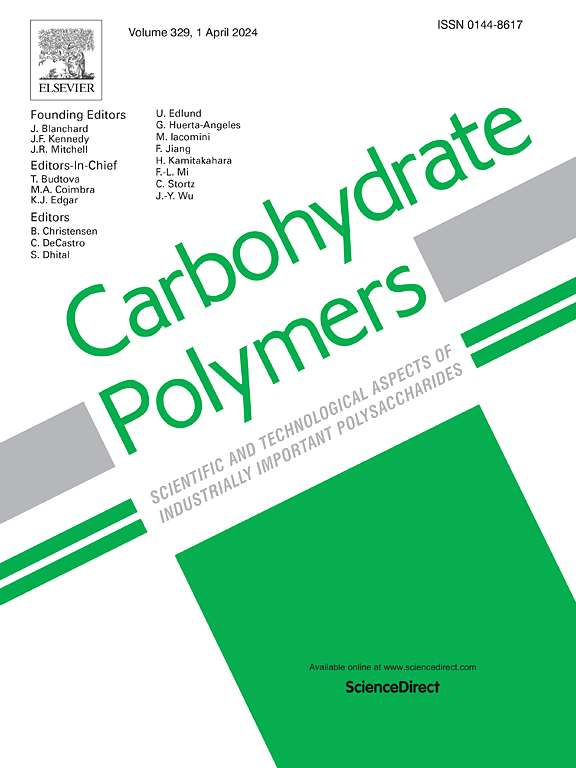A highly compressible and expandable cellulose sponge with arch-like lamellar structures for non-compressible hemorrhage
IF 10.7
1区 化学
Q1 CHEMISTRY, APPLIED
引用次数: 0
Abstract
The development of highly expandable sponges for non-compressible hemorrhage remains a challenge in both civilian and war scenarios. Herein, a cellulose-based highly expandable sponge with arch-like lamellar structure was prepared by introducing interlayer calcium ion cross-linking in the sponges obtained by bi-directional freezing. The cellulose sponge, which has an arched layered structure that can withstand large stress strain, is compressed into small sizes to enter narrow and deep bleeding points, and then expand about 11 times after liquid absorption to apply sufficient and constant pressure on the bleeding points. The sponge can quickly absorb a large amount of blood, causing blood cells to aggregate, and activate the coagulation pathway through carboxyl groups and calcium ions, and exhibit effective hemostatic performance in rat liver defect and femoral artery hemostasis models (blood loss was reduced to about 6.3 % compared with the untreated group). In conclusion, this highly compressible and expandable cellulose sponge with an arch-like lamellar structure is expected to be used for hemostasis of non-compressible hemorrhages.

求助全文
约1分钟内获得全文
求助全文
来源期刊

Carbohydrate Polymers
化学-高分子科学
CiteScore
22.40
自引率
8.00%
发文量
1286
审稿时长
47 days
期刊介绍:
Carbohydrate Polymers stands as a prominent journal in the glycoscience field, dedicated to exploring and harnessing the potential of polysaccharides with applications spanning bioenergy, bioplastics, biomaterials, biorefining, chemistry, drug delivery, food, health, nanotechnology, packaging, paper, pharmaceuticals, medicine, oil recovery, textiles, tissue engineering, wood, and various aspects of glycoscience.
The journal emphasizes the central role of well-characterized carbohydrate polymers, highlighting their significance as the primary focus rather than a peripheral topic. Each paper must prominently feature at least one named carbohydrate polymer, evident in both citation and title, with a commitment to innovative research that advances scientific knowledge.
 求助内容:
求助内容: 应助结果提醒方式:
应助结果提醒方式:


